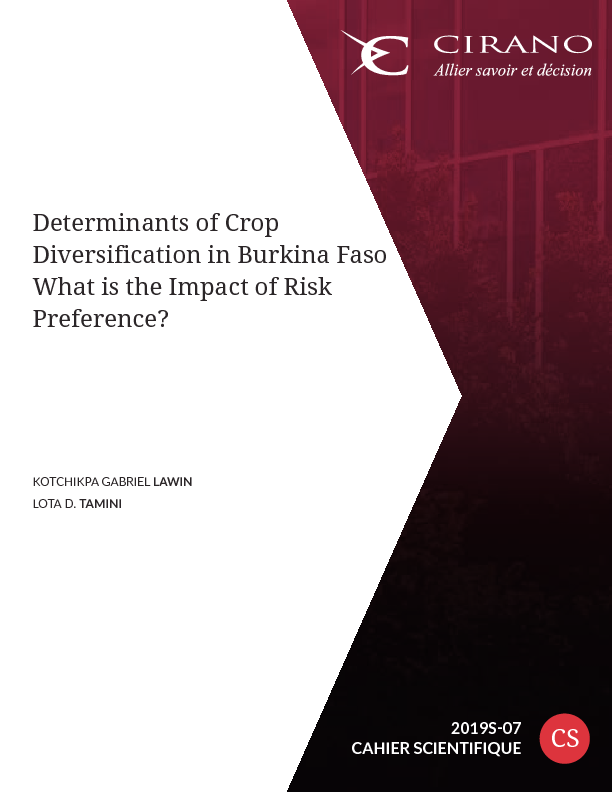Determinants of Crop Diversification in Burkina Faso - What is the Impact of Risk Preference?
The literature considers crop diversification to be a risk management strategy at the farm level. In this article, we combine experimental data on risk aversion with survey data to identify the extent to which risk aversion affects crop diversification decisions. We conduct experiments to measure the risk aversion of smallholder farmers in Burkina Faso and a field survey to gather data on various socio-economic variables. To measure crop diversification, we use three indices of spatial diversity in crop species adapted from the ecological economics literature, i.e., the weighted count index, the weighted Herfindahl index measure of crop concentration and the weighted Shannon index of evenness. An Ordinary Least square (OLS) model is used to estimate the impact of risk aversion on crop diversification when the weighted count index and the weighted Herfindahl index are used as the dependent variable, whereas a Tobit model is used for the weighted Shannon index. Our results show that risk aversion has a negative and significant effect on crop diversification. Risk-averse producers focus more on the production of traditional, less risky and low market value crops. Other variables also affect crop diversification. In particular, education level, distance to market, farm area and land fragmentation are associated with greater crop diversification.




